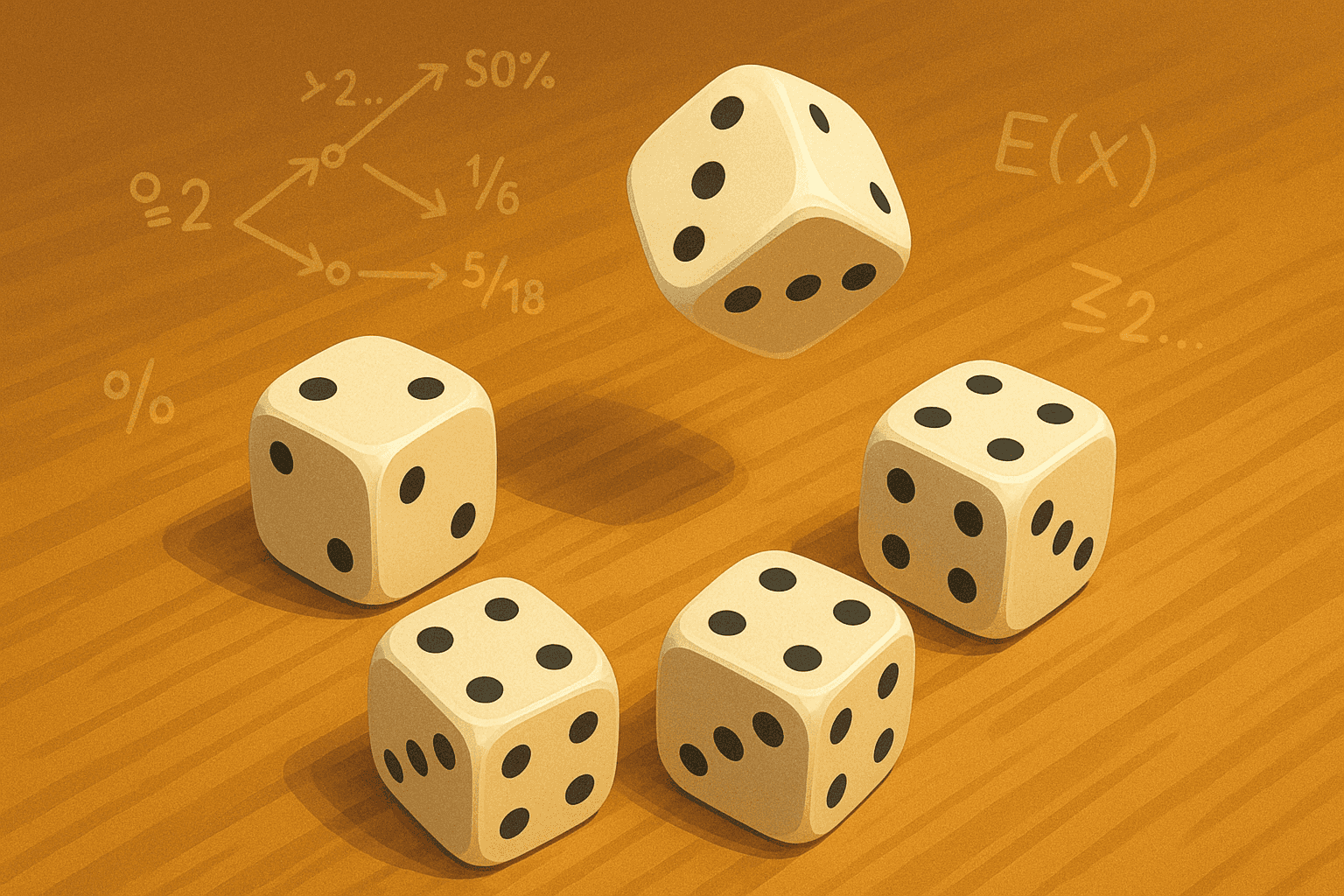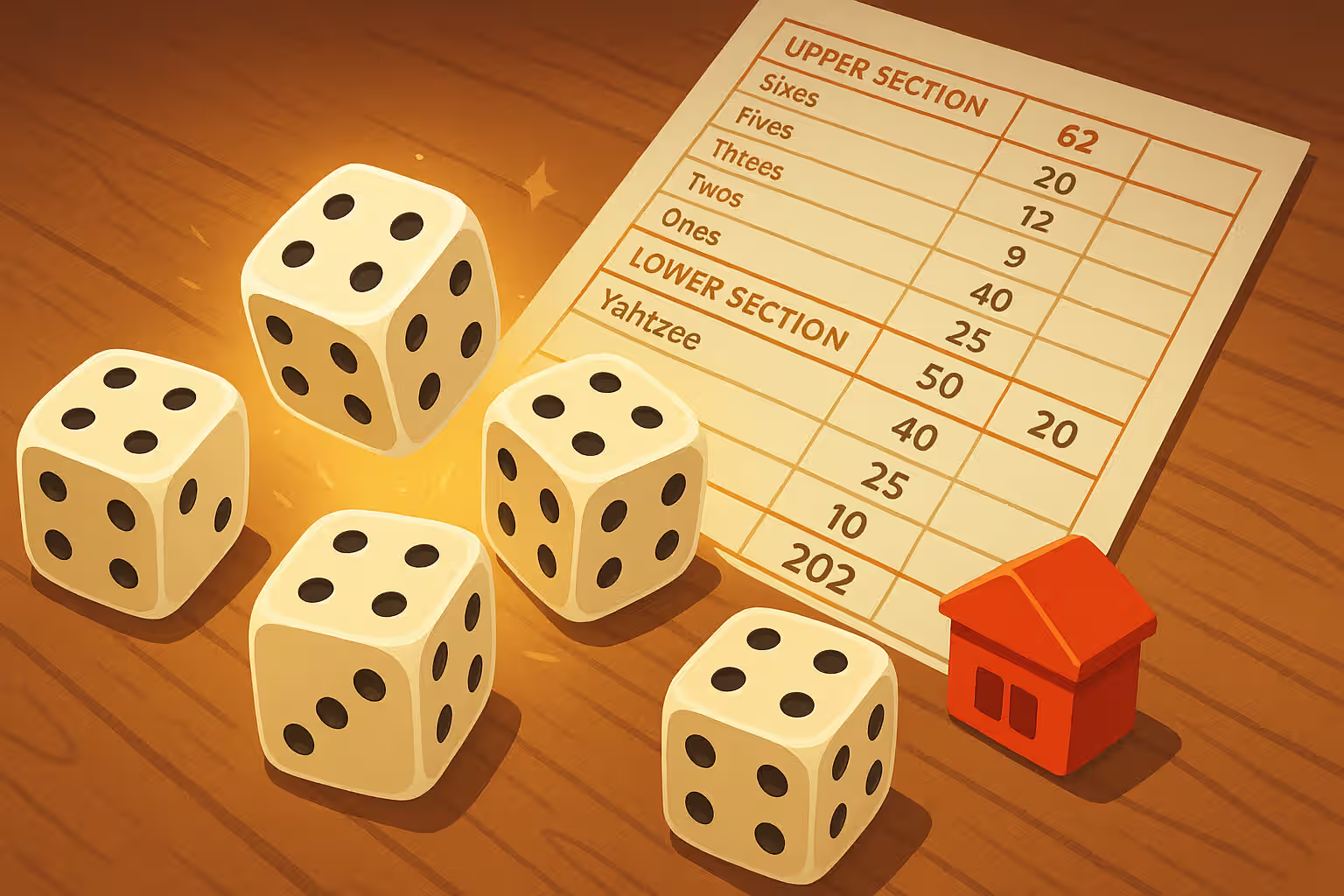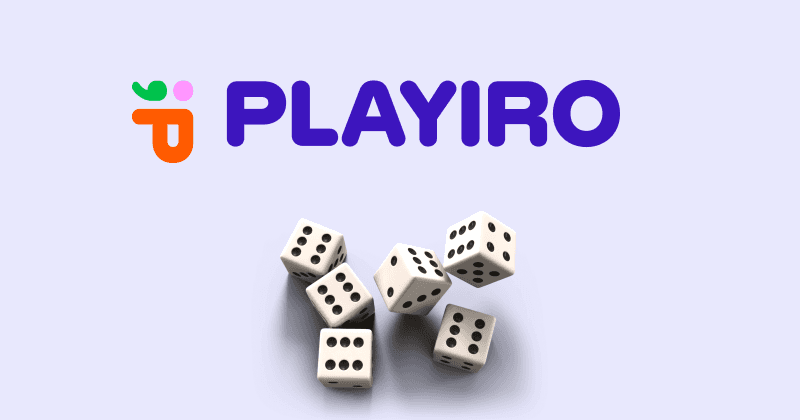
The Mathematics of Yahtzee – Expected Value of Each Roll
Yahtzee is often thought of as a game of luck, but beneath the surface it’s also a game of probability and decision-making. Players who understand the math behind each roll - especially the expected value (EV) - can make smarter choices and consistently achieve higher scores.
In this guide, we’ll break down the mathematics of Yahtzee, explain expected value, and show how to use it in real gameplay decisions.
Created By Adam Davis Fernsby
What Is Expected Value in Yahtzee?
Expected Value (EV) is a mathematical concept that tells us the average outcome you can expect from a particular choice if repeated many times.
In Yahtzee, expected value helps answer questions like:
- Should I keep three of a kind and reroll the other dice?
- Should I aim for a straight or settle for a full house?
- Is it worth chasing another Yahtzee late in the game?
By weighing probability × score, EV gives a more accurate sense of the long-term payoff of each decision.
Probability Basics in Yahtzee
Every roll in Yahtzee is built on probability:
- Rolling five dice gives 6^5 = 7,776 possible outcomes
- The chance of rolling a Yahtzee (five of a kind) in a single roll is 6 ÷ 7,776 = 1/1,296 (≈0.08%)
- With rerolls, the odds improve to about 1 in 22 per turn
These probabilities form the foundation for calculating expected value.
Expected Value of Common Outcomes
Here’s a simplified table showing the EV of common outcomes on a single roll.
| Category | Probability (Single Roll) | Score Value | Expected Value |
|---|---|---|---|
| Yahtzee (5 of a kind) | 1/1,296 (0.08%) | 50 points | 0.04 |
| Four of a Kind | ~0.12% | Avg 20–24 points | ~0.03 |
| Full House | ~3.9% | 25 points | ~0.97 |
| Small Straight | ~12.3% | 30 points | ~3.7 |
| Large Straight | ~3.1% | 40 points | ~1.24 |
| Three of a Kind | ~15.4% | Avg 18–20 points | ~3.0 |
| Chance (any roll) | 100% | Avg ~18 points | 18.0 |
Note: These values shift depending on rerolls and which dice are kept, but they illustrate how expected value highlights likely payoffs.
Using EV in Strategic Decisions
Expected value becomes powerful when comparing choices.
Example:
- You roll three sixes and two random dice. Should you aim for a Yahtzee or take Three of a Kind?
- The EV of chasing a Yahtzee is low (~0.04 on a single roll), but the EV of keeping three sixes and rerolling is much higher, since you’re likely to hit Four of a Kind or Full House, both with strong payoffs.
- Over time, playing for EV rather than just hope gives consistently higher scores.
Advanced Probability – Upper Section Bonus
The 35-point bonus for scoring 63+ in the upper section is one of the most important parts of Yahtzee. Expected values help explain why:
- Average EV for rolling sixes per turn is about 2.5–3 points
- Chasing sixes, fives, and fours consistently increases the likelihood of hitting the bonus
- Sometimes sacrificing a low roll (like scoring 1 or 2 in Aces) is worth it to maximize higher-value categories later
If you’re unfamiliar with how categories and bonuses work, our Yahtzee rules guide offers a complete breakdown.
Why Yahtzee Is a Game of Both Luck and Math
While no player can control dice rolls, the mathematics of probability and expected value turn Yahtzee into more than just luck:
- Luck: Determines the dice results you see each turn
- Math: Helps you decide which dice to keep, which categories to fill, and how to maximize long-term payoff
That’s why skilled players consistently outperform beginners over many games.
Conclusion
The mathematics of Yahtzee shows that every roll is more than random chance — it’s a probability puzzle. By understanding expected value, you can make smarter decisions, improve your chances of hitting bonuses, and play the long game more effectively.
So the next time you sit down with a scorecard, remember: Yahtzee isn’t just about luck — it’s about knowing the math behind every roll.


